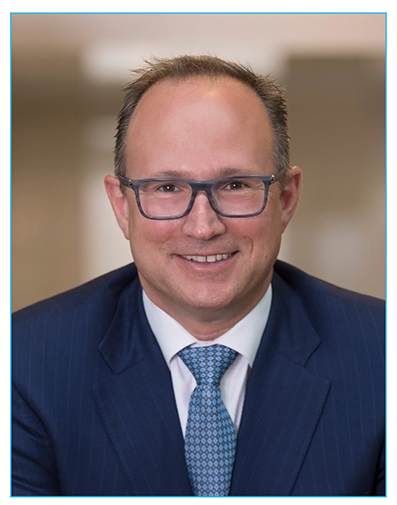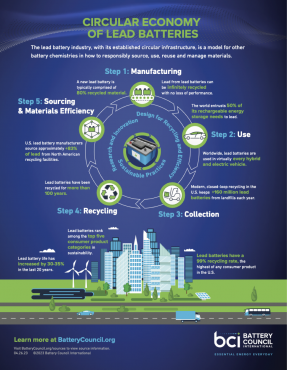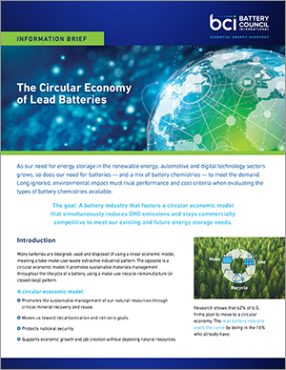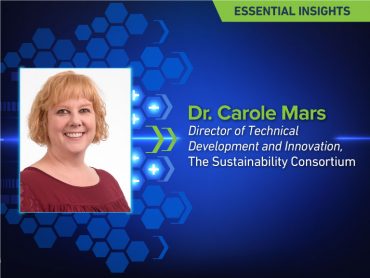
Q&A with Mark Wallace, President and CEO of Clarios
This year’s 17th Annual European Lead Battery Conference & Exhibition was conducted virtually, but that didn’t diminish the caliber of insight. It included a presentation by Mark Wallace, the new president and CEO of Clarios. In a Q&A format, we’ve recapped Mark’s talk on the bright future for lead batteries and included his answers to our follow-up questions. Clarios is a global leader in energy storage solutions, producing one in three of the world’s car batteries. [NOTE: Mark’s original presentation has been edited to fit this format.]

Q. Describe growth opportunities for the lead battery industry and Clarios.
Wallace: This is a seminal moment for the industry as a whole and for Clarios. Global population is growing exponentially. Projections indicate the global car parc may reach 1.9 billion by 2040, driving the need for an additional 200 million batteries. As an industry, we are strategically positioned to meet growing demand. Also, as both the global population and car parc increase, sustainability practices to ensure the responsible management of the entire life cycle of our products become even more important than they are today.
At Clarios, we are not only prepared but excited about our ability to meet market demands today and into the future, from a manufacturing and industry-demand standpoint but also as a leader in sustainability through our steadfast commitment to the environment.
Q. What factors position lead batteries to meet demand?
Wallace: Our business has market strength from cost to safety, recyclability and proven reliability. As an overview, lead batteries provide reliable, predictive performance. And they are highly recyclable, which allows us to produce not only environmentally friendly products, but also ones that are cost-efficient versus other technologies. As the future continues to introduce and expand new and innovative vehicle types – everything from start-stop and mild-hybrid through fully electric – lead technology will continue on a growth path, and Clarios is well-positioned to meet those challenges.
Q. You mentioned the global car parc. How will transportation applications drive lead battery growth?
Wallace: I’m optimistic about opportunities in the automotive industry. The role of the battery is more crucial than ever as vehicles evolve, requiring more power to meet the growing demands of consumers, automakers and regulators. Cars with more advanced features will need more advanced batteries: The number of electrical devices in vehicles has tripled in the past 10 years and is expected to double in the next five. Electric and hybrid vehicles are estimated to account for over 75% of new car sales by 2040, contributing to the shift to up to 50% of the global car parc over the next 20 years from a very small base in 2019. And as this shift toward electrified and autonomous vehicles intensifies, we expect a 12V Absorbent Glass Mat (AGM) lead battery will be the consistent power source. New vehicle platforms with high-voltage powertrains are paired with lead batteries to provide power to support critical systems. Clarios is positioned to service this emerging market with affordable, reliable and sustainable 12-volt power sources to support EVs and the critical, state-of-the-art features they offer. And we can do this while continuing to provide products for standard vehicle types. As this shift continues, we are adapting our R&D and manufacturing to continue to meet and drive new market demands.
Q. Besides transportation, what other factors will help ensure the long-term healthy growth of the lead battery sector?
Wallace: Lead batteries have an admirable record of environmental leadership. There’s no better example of a functioning circular economy anywhere in the world than the lead battery industry. I’m proud of our company and its ability to create a closed-loop recycling process in established markets, which maximizes sustainability.
Q. How does this help customers in the U.S. and North America from a security and reliability standpoint?
Wallace: Providing customers a system to safely manage their inventories of lead batteries at the end of the product’s life cycle supports our customers’ goals of sustainability and safety. Additionally, by responsibly recycling battery components, manufacturers like ourselves and others are better able to closely control quality to enable delivery of more advanced and reliable batteries back to the customer.
Q. You started your new position with Clarios just after the COVID-19 crisis hit. How would you gauge the industry’s response?
Wallace: Without batteries, our economy and its response to this crisis would come to a stop. It makes me proud of how our industry rallied to continue to supply much-needed products to our customers and, ultimately, to vehicle owners around the globe. And beyond keeping up with ongoing demand for our products, Clarios has also stepped up in other ways. We’ve made significant financial donations to aid in COVID-19 global relief efforts. We have also donated critical medical supplies and equipment to health care organizations, as well as batteries to frontline workers.
Q. How essential have lead batteries been to customers and North America’s COVID-19 response?
Wallace: The pandemic has shown us just how vital the lead battery industry is. Without 12V batteries, first responders can’t function. Food and medical supplies can’t reach the people who need them. Essential employees can’t get to their jobs. It’s as simple as that. With that in mind, we are working tirelessly to ensure supply chain stability, to adapt quickly to changing regional needs and to guide our customers through a time of uncertainty.
Q. How has the lead battery industry remained so resilient, avoiding supply chain disruptions?
Wallace: First and foremost, our industry has received a critical and essential designation, which protects our ability to operate. Second, our closed-loop system helps ensure a consistent supply of safely managed raw materials to maintain production and efficiently serve the needs of customers as they work to keep the world moving forward.
Q. Tell us more about the success of closed-loop manufacturing at Clarios.
Wallace: To start with, I think it’s important to note that 99% of battery materials can be recovered, recycled and remade. And frankly, we’ve built our company on that statistic. Through a decades-long partnership with our retailers and dealers, we have developed one of the best examples of a circular economy – one that collects, recovers and reuses 8,000 batteries every hour, every day, across our global network. Beyond using those materials to build high quality batteries, we’re greatly reducing energy consumption and greenhouse gases.
Q. How does Clarios circularity benefit its stakeholders?
Wallace: With an eye toward the future, Clarios is leading the charge to embed energy storage stewardship at all stages of a battery’s life. From raw materials to recovery and reuse, we’re improving our footprint while generating even more value for our customers, investors and society as a whole. We hope that our leadership in the circular economy will influence companies across all industries as the need for sustainability and environmental responsibility increases in the coming years.
Q. How are Clarios and the lead battery industry expanding circularity best practices beyond North America?
Wallace: Every manufacturer – not just in our industry but in all material-intensive manufacturing fields – has a responsibility to make sure its products are handled responsibly throughout their entire life cycles. At Clarios, we are in constant contact with our suppliers, customers and investors to increase transparency about our operations and sourcing. We routinely participate in industry-related conferences and discussions to help improve standard operating procedures and corporate philosophies toward clean initiatives. Finally, we are working with policymakers to embed responsible life cycle management practices for all battery chemistries into regulation and to advance policies to enable circular practices.
Through the framework of our well-documented and recognized Sustainability Blueprint and circular economy approach, we will leverage this expertise and collaborate with partners and policymakers to accelerate the adoption of circular economy principles across the globe. After all, it’s everyone’s responsibility to leave the planet in better shape than we found it.
To watch Mark Wallace’s ELBC presentation, click here.







